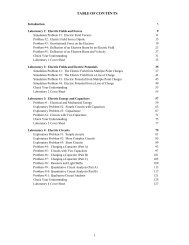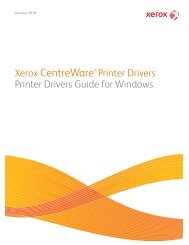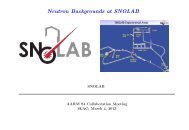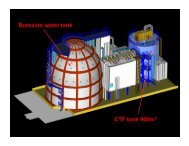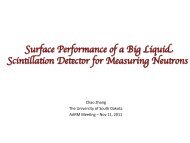PCI_PCIe User Guide_RevA.pdf - Symmetricom
PCI_PCIe User Guide_RevA.pdf - Symmetricom
PCI_PCIe User Guide_RevA.pdf - Symmetricom
You also want an ePaper? Increase the reach of your titles
YUMPU automatically turns print PDFs into web optimized ePapers that Google loves.
1.3. Functional Description<br />
Code and GPS Mode, this major time is readily available, but in the Free Running and External 1 PPS<br />
Modes, major time is not available and must be set manually by the user. The Timing Mode is<br />
selected via the dual-port RAM interface as described in "Command 0x10: Set TFP Timing Mode" on<br />
page 41, using command 10.<br />
Mode 0 (Time Code Mode)<br />
In Time Code Mode, the TFP derives time from the currently selected input time code. The TFP will<br />
accept time code in either amplitude modulated (AM) or DC Level Shift (DCLS) form. AM time code is<br />
a sinusoidal analog signal that is amplitude modulated with the time data. DCLS is simply the envelope<br />
of the modulated time code and is a digital signal. Most time codes provide both major time (days,<br />
hours, minutes, and seconds) and minor time (subseconds) to the card. Some IRIG time codes (e.g.,<br />
IEEE1344) and GPS (if equipped) provide year information.<br />
Mode 1 (Free Running Mode)<br />
In Free Running Mode, no external timing source is used and the TFP oscillator is allowed to free-run.<br />
The user must set major time manually. The Major Time is selected via the dual port RAM interface<br />
as described in "Command 0x11: Set Time Register Format" on page 41, using command 11. Free<br />
Run mode allows the user to perform timing tests when an external timing source is unavailable.<br />
Mode 2 (External 1 PPS Mode)<br />
In External 1 PPS Mode, the TFP synchronizes its oscillator to a user-supplied 1 PPS signal. The<br />
user must set major time manually. The Major Time is selected via the dual-port RAM interface as<br />
described in "Command 0x11: Set Time Register Format" on page 41 Chapter 1.5, using command<br />
11. The External 1PPS Mode will not indicate locked status to the External 1PPS reference without<br />
first being synchronized to a time reference that includes time of day information (Time Code or<br />
GPS). Please note that the TFM will always synchronize to the External 1PPS when selected, but if<br />
the card has not been previously synchronized by Time Code or GPS, the Tracking, Phase and<br />
Frequency Status information will not be valid in External 1PPS mode.<br />
Mode 3 (RTC)<br />
In the Real Time Clock (RTC) mode, the TFP receives its major time via the RTC and operates as a<br />
Generator (no input reference).<br />
Mode 6 (GPS) - bc637<strong>PCI</strong>-V2 and bc637<strong>PCI</strong>e<br />
In GPS Mode, like Time Code Mode, both major and minor times are derived from the timing source.<br />
In addition to time, other information is available from the GPS system such as position and velocity.<br />
This mode requires the use of a GPS antenna that has an unobstructed view of the sky. Note that the<br />
antenna location is important because the GPS receiver must initially acquire and track at least four<br />
- 17 -



